Texas Battles Fake Metal Plates as Counterfeiters Outsmart New Tag System

RML P39 GT Hypercar Unleashed 907bhp Track Monster Aims to Outpace the 911 GT3...
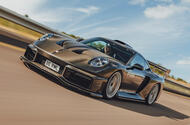 907bhp GT Hypercar promises to lap the ’Ring faster than a 911 GT3 RS
907bhp GT Hypercar promises to lap the ’Ring faster than a 911 GT3 RS
Being at the wheel of RML’s single P39 prototype, as it stalks the outside lane of Millbrook’s high-speed bowl, is like filling up at a deserted forecourt at 3am. Familiar but faintly unreal.
The major controls and ergonomics are as per the 992.1 Porsche 911 Turbo S donor, which RML would prefer arrived for the four-week, half-a-million-pound conversion process with fewer than 10,000 miles on the odo. As such, if you’re confident driving even a sweet little Carrera, getting about in the GT Hypercar (P39 is the codename) should be a doddle. Or so you’d think.
Underslung off the steering boss are four serious-looking rotary dials, some of which are angrily backlit in red. My view out of the rear window is also more compromised than that of any mad Lambo, mainly because there is no rear window, just a dark nook in which lurks a steel half-cage. And beginning just above my head is the five-foot-long intake tract for a 907bhp flat six. This ensures that bouts of heavy throttle sound like God whispering directly into your ear.
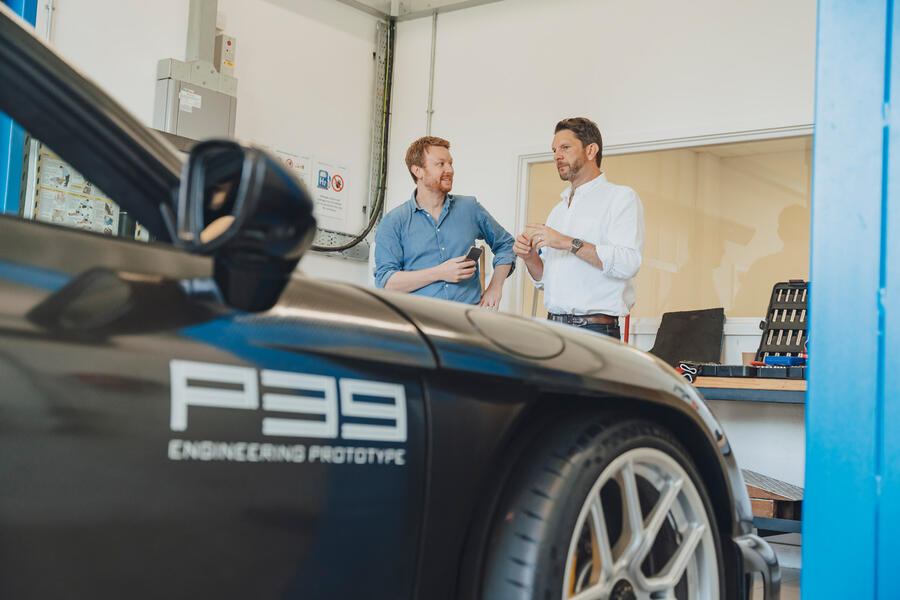
“Very much a beast with two faces” is how Michael Mallock (above, right) describes the car, which was revealed in full production form at this year’s Salon Privé. The GT Hypercar is the first ware from RML’s newly minted ‘Bespoke’ division. The department is overseen by Mallock and tasked with delivering rare-groove dream machines that delight clients and show major OEMs what the company can do, and do rapidly, by applying motorsport know-how to road car manufacture.
Though the ‘bespoke’ wrapper is new, the know-how certainly isn’t. P35 was the Ferrari 550 Maranello-based RML Short Wheelbase we drove in 2022, with its picture-perfect handling and stunning cabin atmosphere. P36 was a world-class Bizzarrini Strada revival. P37 was Lotus’s GT4 Emira. We can’t talk about P38 because it’s a secretive white-label project.

Paul Dickinson has also recently been brought in as group CEO, fresh from running Bentley’s Mulliner division, to make an operation with a distinct skunkworks flavour more corporate but “not too corporate”, a glint-eyed Mallock assures us at Millbrook.
We’ve joined RML for the day as the engineers fine-tune a machine that, somehow, was still only a top-down render being discreetly shown to would-be buyers at last year’s Pebble Beach. One face of this beast, as Mallock puts it, will be in its ability to lap the Nordschleife in less than 6min 45sec. That will make the GT Hypercar among the fastest road-legal track cars on the planet.
The other, more civilised face will be an ability to cover big mileages with ease. It’s why the suspension rates in the so est setting are a touch more languid than that on the donor car. Mallock is in a good place to judge his engineer’s efforts in this respect: subsumed within this naked-carbon prototype is his faithful old daily.
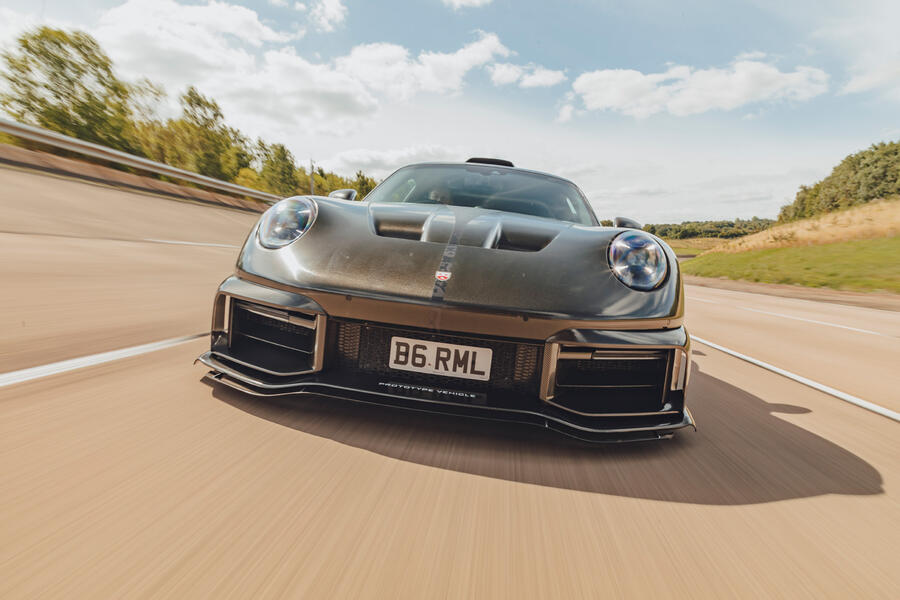
RML has previous when it comes to rapid ’Ring times, of course. It white-label-engineered the Nio EP9 that in 2017 took the record for the fastest EV lap with a sensational time of… 6min 45sec.
So P39 is an ambitious car, as chief engineer, ex-Lola man and endurance racing fanatic Adam Airey explains once we’re off the bowl and the car’s body has been carefully fed back into a garage that feels narrower than went we set out.
“The main driver to start with was the Nürburgring lap time using a 992-generation Turbo S platform and giving it our body,” he says matter-of-factly. “But then Michael said the car also had to drive like a Turbo S on the road.” It’s hard not to laugh when Airey explains that this was slightly problematic, given that by this stage his team had a full race car on their hands.
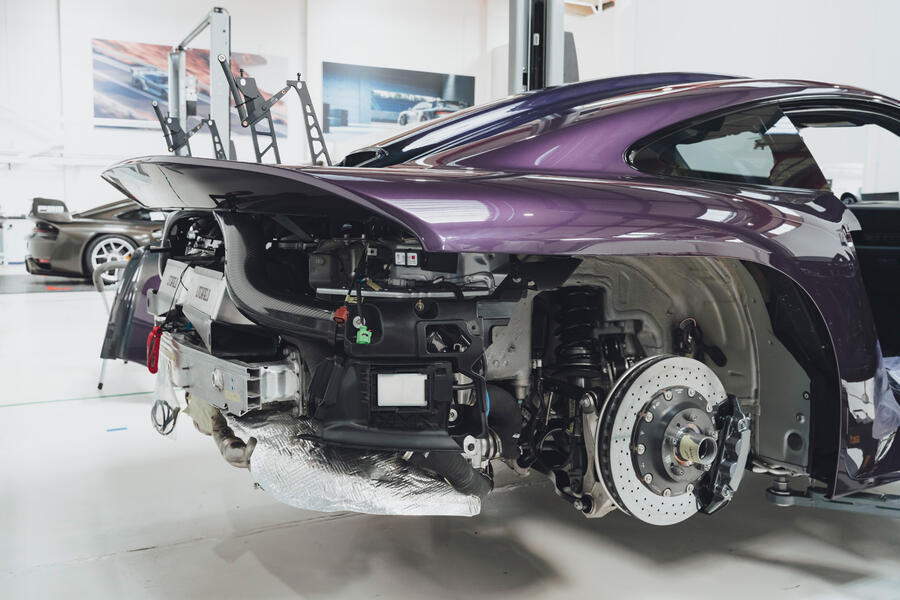
“So we’ve had to come up with a Jekyll and Hyde strategy on damping and springing,” he says. Forging a split personality involved working with R53 Suspension, these days a household name in our world thanks to its involvement with Gordon Murray’s new-wave supercars.
The approach is that the P39’s spring has a primary rate nearly identical to that of the regular Turbo S, but that under load comes into a stiffer rate before you get to race car-style wire-gauze bump stops. These are there to keep the floor off the ground in extremis, when the body is slammed to the deck in its lowest ride setting and close to a tonne of downforce is made at 180mph. It means RML’s car makes more downforce than even a 911 GT3 RS, although if kilos of aero adhesion are the new bragging rights in supercar circles, those owners can strike back by fitting the Manthey package, which just pips the P39.
However, hydraulically adjustable ride height is a feature no factory 911 can currently match. The system, which can drop the car 15mm in an instant, also runs the nose-lift and a full-blown DRS wing with brilliantly theatrical Le Mans-style lights in the endplates.

Opening the DRS flap increases your slipperiness by 23%, which is a similar effect to what you get on F1 cars. It slams shut if throttle application goes below 98%. Meanwhile, the dampers are manually adjustable but run in one of three electronically controlled presets that the driver selects via one of the four steering wheel rotaries.
Another of the three rotaries is for the aero setting: swivel to Track mode and a vast chin spoiler deploys from nowhere with a loud slap. Then you have the powertrain modes and, of course, ride height. The dials themselves appear lifted from the GT3 RS but are made by RML and feel OEM-grade.
At this point, I commit the sin of asking about the bodykit concocted by ex-McLaren designer Darryl Scriven, which evokes the fabulous 911 GT1 Strassenversion of 1997. Only 20 of these homologation specials were made, so RML’s GT Hypercar will be half as rare, with 40 planned.
It’s a slip of the tongue, because I well know the gold-tinged carbon-fibre that enshrouds the underlying 911 monocoque is no mere ‘kit’. Still, it earns me a rebuke from Mallock that’s justified when we visit RML’s production facility later that day. In one bay, an upturned carbon clam the size of a skip is waiting to be flipped over and bonded onto the car’s 911 core using only 4kg of adhesive.
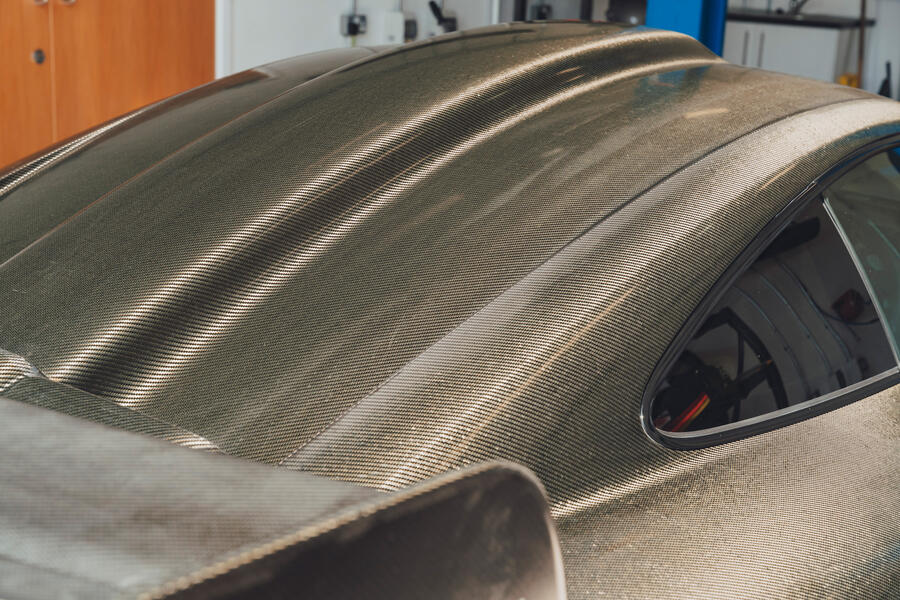
It’s an epic piece. Just 19kg but extending from A-pillars to rear bumper, encompassing the roof and the almighty scoop that rams air into the intake. The glue gives four technicians a 40-minute window to get the job done. It’s truly artisanal work, and along with another monumental front apron results in hardly any shutlines, for the full prototype racer aesthetic.
On the subject of the body, those intakes in the rear haunches? They’re no such thing. Unlike with the regular Turbo S, here their role is not split between feeding the engine and cooling the rear brakes. They do neither, being pure through-ducts that reduce drag by 3%. Find the right angle and you can peer right through them.
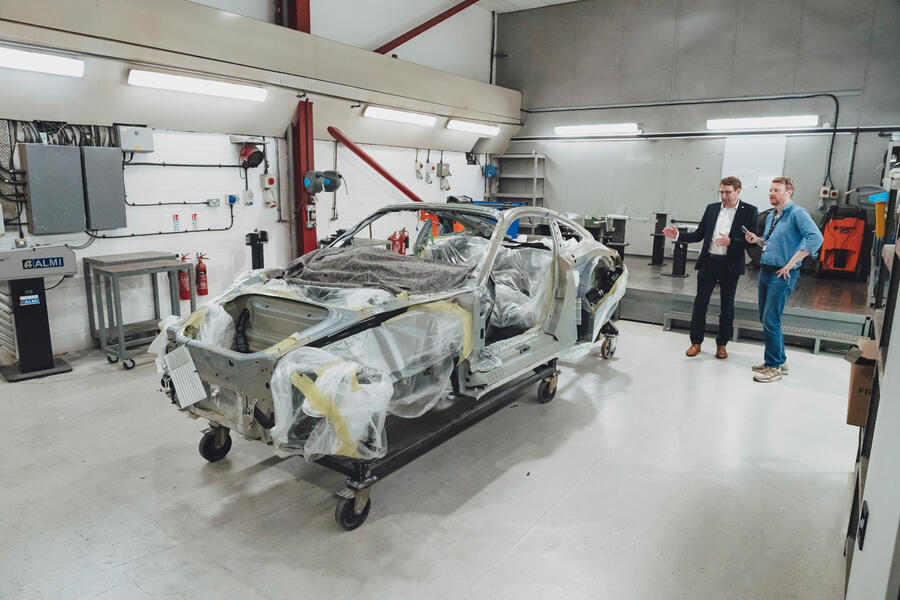
The GT Hybrid had to look totally spectacular, too. Obviously. Getting rear arches positioned just so relative to the long-tail body meant extending the underlying 992 wheelbase by 100mm via the suspension.
The tracks are also wider. Quite a lot wider, in fact – more than a wheel offset. It has necessitated new, elongated suspension links, which are beautifully machined, with geometry designed to retain the functionality of the Turbo S’s active anti-roll bars and rear-axle steering. Remapping these systems was not really an option, says Mallock.
To illustrate the complexity of modern cars, he tells me that when they swapped the seat from a 911 into a Taycan for materials testing, the radar and left window stopped working. As such, in its former life as a standard Turbo S, this prototype often carried dataloggers so RML could understand the detail of the sub-systems, and ensure the GT Hybrid’s suspension movements would be compatible.
While the fundamental kinematics of the donor car are thus largely unchanged, including the roll centres, the new lower wishbones do have camber shims for easy adjustment trackside.
Against all this, the small matter of 907bhp feels like a footnote. Hell of a footnote. Litchfield has done the work on Porsche’s 3.7-litre twinturbo motor, and after RML has stripped the donor car, the chassis heads west to Gloucestershire to have its heart put on anabolic steroids. The stock engine is robust enough that the internals need not be changed.
It’s more a question of “keeping the engine happy”, as Iain Litchfield puts it, with a surfeit of cooling, not least from uprated dual intercoolers. The uplift in power from the regular 641bhp of the Turbo S is also the result of a new electronic calibration and new turbochargers whose turbines are 6mm or so wider in diameter. This doesn’t punt up the turbo lag because it’s balanced out by the ram-air effect of the new intake and freer-flowing filters.
All this kit can be stuffed into the engine bay because RML’s long body takes the sting out of packaging constraints. The P39 has the largest catalytic converters on the market, as well as a full inconel exhaust smothered in F1-grade heat shielding. In RML’s workshops, the huge intake tracts – two polished carbonfibre anacondas curling down to each side of the intercoolers – are on full display.
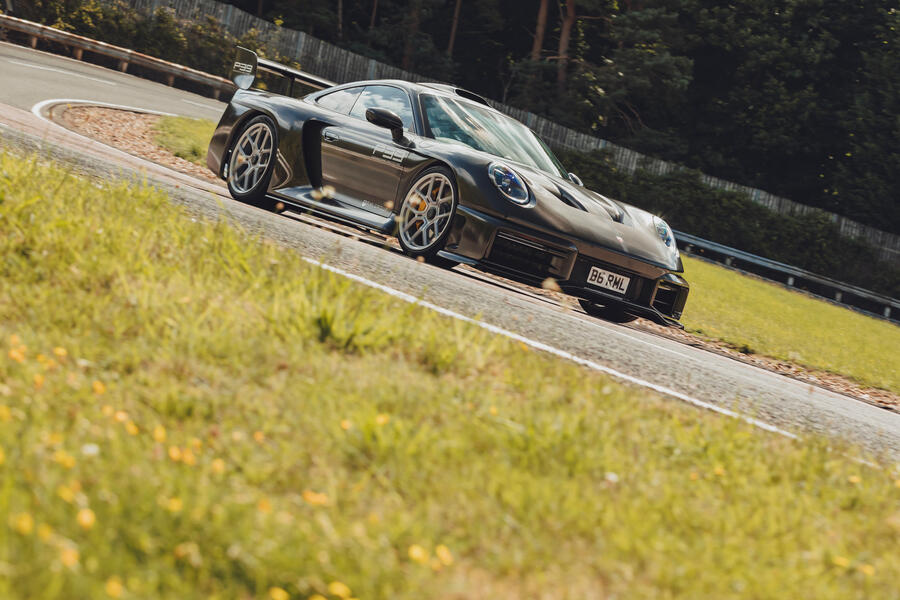
Slide over the carbon sills, distended to align with the girth of the body, and how does it all feel? ‘It’ being twice the output of a BMW M2, suspension costing more than your average city car and a silhouette from La Sarthe ’97.
The engine’s malevolent burble and the eerie sense of being deep in the belly of something frighteningly potent put me in mind of the old Impreza, crossbred with an Aventador SVJ. At the same time, ride quality both taut and plush, along with this prototype’s hard-working vibe, is faintly McLaren 600LT gene-spliced with Caterham Seven Cup. All of which is to say finished RML GT Hypercars will feel unique.
In the default mode the engine is demure and puts out 740bhp or so. Ramp it up into Sport or Sport Plus and 589bhp per tonne is suddenly a reality, and is your cue to mentally buckle up. When the boost hits, acceleration is frantic – not landmine-intense but somewhere between bungee rebound and Josh Lewsey-style T-boning.
That said, even when 738lb ft wraps itself around the chassis at 4500rpm, with our Michelin Cup 2 tyres traction is just fine on this dry day, and Porsche's ceramic brakes feel supreme. It’s all manageable, in short. In the wet, without traction control? Different story, I imagine. Pure Group B.
On Millbrook’s hill route in its hunkered Track setting, the car’s stability is impressive. What the P39 longs for, though, is Pouhon or Stowe. Or Mutkurve. You sense its vast reserves of pace. Does it feel 6min-45sec-at-the-’Ring quick? Wouldn’t know; I've never been near that kind of madness. But the ceiling is clearly high – GT3 RS high, without the mechanical transparency.
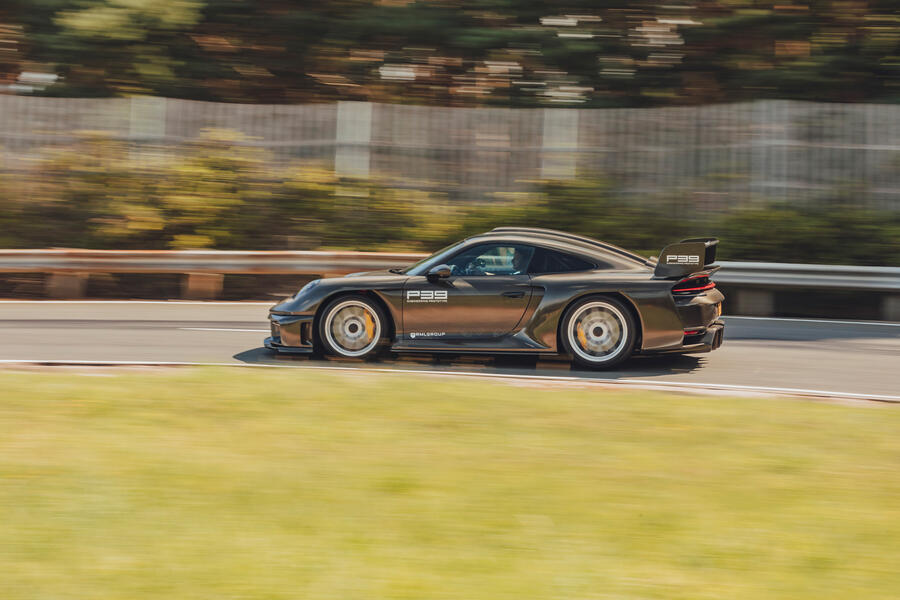
This isn’t to say the P39 isn’t fun. Through the medium-speed corners at Millbrook, taken in third gear, a neat rotational energy scythes through the heft of the steering. It’s trusty but not without delicacy. Note, though, that RML has not tinkered with Porsche’s ESP and traction control set-up. As a result, if you’re pushing on in the P39, the midway PSM Sport setting, overwhelmed and flustered, locks things down early. To get a real picture of the handling, it all needs turning off.
Despite its 30-page functional-safety booklet, the hydraulic system isn’t yet homologated, so there’s no DRS en route from Millbrook to RML’s base in Wellingborough. Mallock and I haul up into the car park 55 seconds later than intended.
Inside, I finally get to behold a finished article – the purple car ready for Salon Privé – and the quality of the fit and finish is undeniable. The scoops and gullies and the drama mirror the driving experience, channelling the excesses of the 1980s and 1990s but keeping things civil and conspicuously haute-automotive.
At £495,000 before tax and the optional Track Pack that brings the cage, the hydraulic ride height and the headline powertrain figures, it’s just as well.
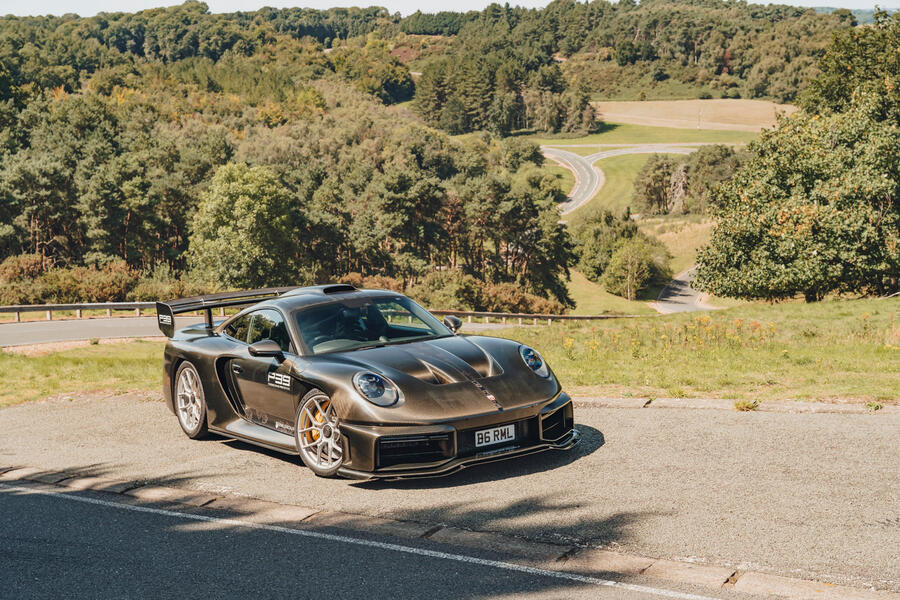
I ask Dickinson if being a relative unknown next to giants such as Ferrari puts unbearable pressure on RML to deliver flawlessly first time.
“That’s how RML works with our motorsport roots,” he says. “You race on Sunday and the car has to be perfect. You don’t get a second chance.”
Indeed, the GT Hybrid is ready, in record time. The next task is to prove that wild ’Ring claim.
RML GT Hypercar specifications
Price £594,000 (plus donor car) Engine 6 cyls horizontally opposed, 3745cc, twin-turbocharged, petrol Power 907bhp at 7300rpm Torque 738lb ft at 4500rpm Gearbox 8-spd dual-clutch automatic, 4WD Kerb weight 1540kg 0-60mph 2.4sec Top speed 205mph Rivals Lamborghini Revuelto, Ferrari SF90, Porsche 911 GT2 RS
Ford Recalls 1.4 Million Vehicles Over Faulty Rearview Cameras—What Drivers Need to Know

Polestar Urges Europe to Stay the Course on 2035 Gas Car Ban and Lead...
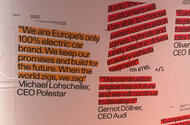
Polestar used its Munich event to highlight the broken all-EV promises of its rivalsCEO says industry must stay on all-electric heading ahead of talks with European Commission on Friday
Polestar has urged the European Commission (EC) not to roll back on its commitment to ban the sale of non-electric cars by 2035 ahead of crunch talks this Friday.
Automotive industry leaders will meet EC president Ursula von der Leyen on Friday to try to secure a relaxation of the CO2 rules, and only Polestar and sibling Volvo have taken the opposite view to keep the status quo.
Polestar CEO Michael Lohscheller said discussions on going all-electric had been completed and the decision already made, and reversing that was now "completely the wrong way" to go about things, particularly so given that even those looking to have the ban relaxed agreed "the future of mobility is without emissions".
"If we all agree on that, then the question is what is the best and fastest way to get there?" Lohscheller told Autocar at the Munich motor show. "I can't see that postponing it by five years is going to help anything, because we have to do the transformation anyhow. We might as well do it immediately."
Lohscheller's Polestar unveiled the new Polestar 5 sports saloon in Munich, and he used the event to poke fun at its rivals who have made U-turns on EV pledges. The event featured branding with quotes from the likes of Audi's and Mercedes' CEOs, who have made recent comments looking to preserve internal-combustion engines even though their companies have previously taken the opposite view.
Lohscheller said Europe should in fact take the opposite view on EVs and "lead on this" transition, because “then so many more opportunities come out of this, right?
"At the end of the day, it will happen anyhow. Do we say it's 2035 or 2040? I don't see any point in postponing it. The argument is always that more jobs may disappear and so on, but postponing five years may endanger more jobs, right?
"I think changes are inevitable and let's do them right away."
Lohscheller rejected the view from other car makers that there were not enough charging points, and that EV range wasn't good enough.
"I think as an industry we just need to learn to be competitive and produce cars that are more cost-competitive. I don't buy these arguments. Maybe one company can't do it, but others will find a way."
Ferrari 849 Testarossa Unleashed: Hybrid Power and Bold Design Redefine the Icon
Ferrari 849 Testarossa Unleashed The Most Powerful Production Ferrari Ever Reimagines a Legend
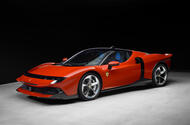 Legendary name resurrected for new supercar, which is most powerful production Ferrari yet
Legendary name resurrected for new supercar, which is most powerful production Ferrari yet
Ferrari has reprised a storied name with the new 849 Testarossa, which replaces the SF90 Stradale and becomes the company's most powerful series-production model.
The new supercar makes 1035bhp - 49bhp more than its predecessor - and will reach 62mph in 2.35sec on its way to ‘more than’ 205mph.
Deliveries of the coupé are due to start next spring, with the drop-top Spider variant arriving in the autumn.
Along with its extra power, innovations concerning the car's aerodynamics and chassis electronics mean the 849 Testarossa can lap Ferrari’s Fiorano test track in 1min 17.5sec - 1.2sec quicker than the SF90 Stradale and just 0.2sec shy of the limited-series SF90 XX Stradale.
The lap time was achieved with the help of the Assetto Fiorano pack, which will be offered from the start of sales and shaves 30kg off the car’s 1570kg dry weight, as well as bringing track-focused upgrades to the suspension, tyres and body.
That dry weight figure is unchanged from the SF90 Stradale, thanks to incremental weight-saving measures throughout the car that mitigate the 20kg or so that the new body and driveline modifications have added. The spider weighs 90kg more.
In its styling, the mid-engined 849 Testarossa is a radical departure from its predecessor. The leading edge adopts the striking, full-width graphic recently seen on the F80 and 12Cilindri, while the rear of the car features two spectacular spoilers intended to evoke Ferrari’s sports prototype racers of the early 1970s.

Chief designer Flavio Manzoni said at the reveal event in Milan that "it is our duty as designers to create something new", despite the car’s effective status as a facelift and its mechanical similarity to the SF90 Stradale.
He spoke of the new car's "strong geometric forms and sharp geometric cuts" but said the design intentionally takes no inspiration from the legendary 512 Testarossa of 1991, despite the name.
The new bodywork is also notable for its dramatic side intake vents, which are integrated into the doors and feed enormous intercoolers taken from the F80. These aluminium panels took two years to put into production, such was the difficulty of pressing the shape.
Cooling was one of the challenges of the project. As well as those intercoolers having a fifth more surface area than those of the SF90 Stradale, the front intakes are also significantly enlarged. There are also new oil coolers.
The new body makes the 849 Testarossa 8mm longer than the SF90 Stradale. It also helps the car make 25% more downforce at 150mph, although much of this improvement is down to the powerful underbody outwash and the new diffuser.
Mechanically, the car is largely unchanged from the plug-in hybrid SF90 it supersedes. Under the body is the same driveline, with a 3990cc twin-turbocharged V8 operating alongside two independently acting electric motors on the front axle and another between the engine and the eight-speed dual-clutch automatic gearbox.
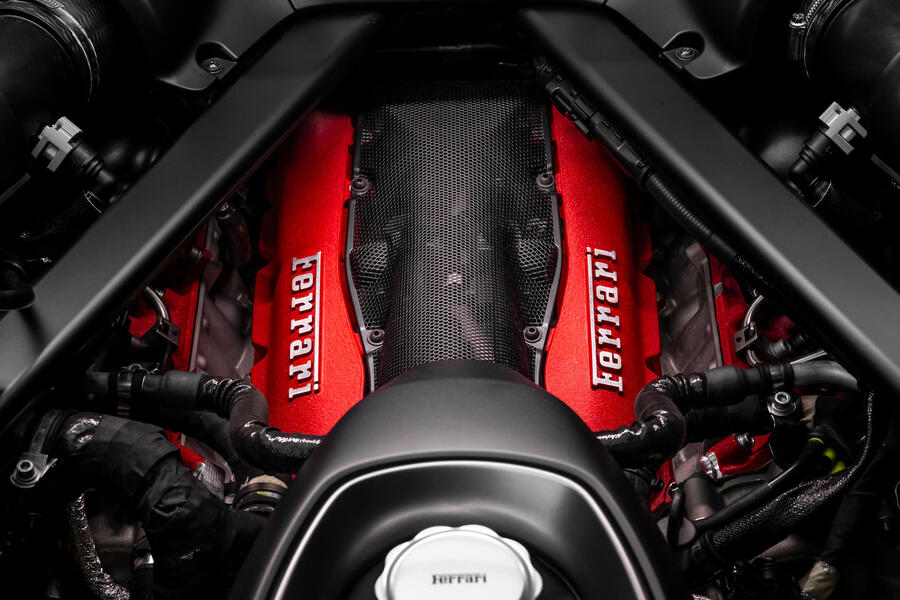
That the system now makes 49bhp more than before is thanks in part to larger-diameter fixed-geometry turbochargers with low-friction bearings, derived from those used in the F80. There's also an 'innovative' heat shield for the turbine casing that takes learnings from the 296 GT3 racing in the World Endurance Championship.
Further revisions have been made to the cylinder heads, exhaust manifolds, intake plenums and valvetrain, as well as the fuel rail. The lighter crankshaft is new too and titanium screws have been used throughout.
The high-exiting exhaust tract is also 10% longer than before and has larger ducts in an effort to improve the musicality of the 'Tipo F154' engine. Further helping in that endeavour is that the redline has risen by 300rpm to 8300rpm.
Alone this engine musters 818bhp and 621lbft. The combined output of the electric motors is limited to 217bhp at any given moment, because the 7.5kWh battery, which is tucked up against the rear bulkhead and allows for around 18 miles range in the car's EV mode, doesn't allow greater draw.
Chief development officer Gianmaria Fulgenzi said the potential to increase electric power by using a more capable battery exists, but for now his team is happy with the car's overall balance of its two power sources.
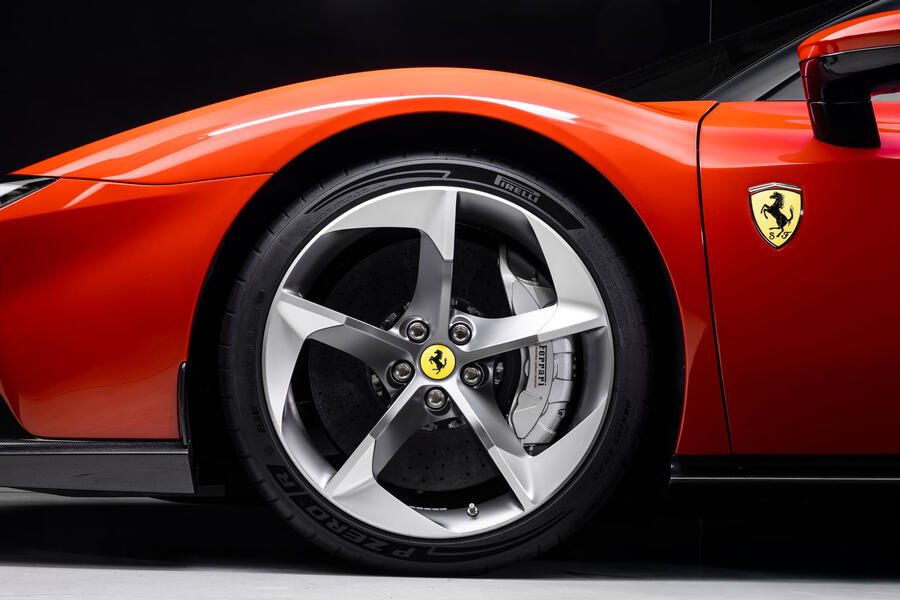
Elsewhere, the brake package has been upgraded from the SF90 Stradale, with larger carbon-ceramic discs and redesigned calipers from Brembo. The regenerative braking calibration has also been revised to give more feedback and consistency as the system blends retardation from the electric motors with the physical brakes themselves. The 849 Testarossa is claimed to haul up one metre sooner from 62mph than its forebear.
The gearbox has also been substantially improved, said Fulgenzi, building on the software found in the 296 GTB for faster shifts both up and down the ‘box.
Mated to the rear electric motor, it drives through an electronically controlled limited-slip differential, the behaviour of which is partly informed by Ferrari’s Slip Slide Control system, now at version 9.0.
However, the big development in terms of software is the inclusion of the Ferrari Integrated Vehicle Estimator (Five) introduced on the F80.
This system, currently reserved for cars only with four-figure power outputs, is able to calculate true speed and vehicle yaw with a very high degree of accuracy. Along with data from sensors dotted about the car, Five creates a ‘digital twin’ of the vehicle’s dynamics in real time and uses this as the basis of a model that predicts what will happen next.
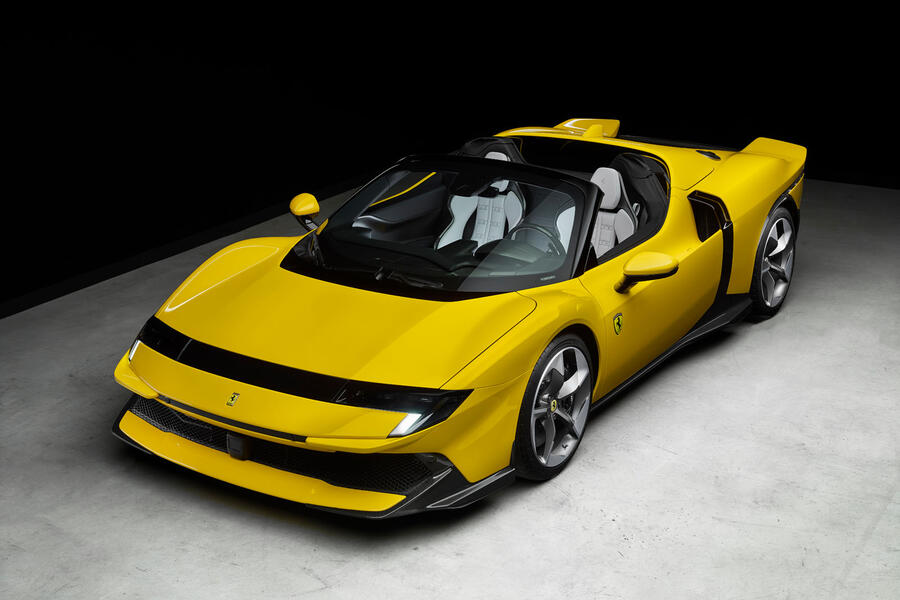
This prediction determines the behaviour of the ABS, stability control, traction control and torque-vectoring functions to maximise speed and stability.
The gathering of data, the generation of the twin model, the subsequent prediction and finally the actioning of the 849 Testarossa’s various chassis systems unfolds in a timeframe of single-digit milliseconds. The effect from the driver’s perspective is a reduction in steering inputs - that is, enhanced economy of movement - and quicker lap times.
UK pricing hasn't yet been confirmed, but in Europe the 849 Testarossa will start at €460,000 (£398,260) for the coupé and €500,000 (£432,890) for the spider, with the Assetto Fiorano package adding a further €52,500 (£45,450).
It marks a significant increase over the pricing of the SF90 Stradale when it was launched in 2019 but puts the Ferrari on par with its closest rival, the Lamborghini Revuelto.
Will the XX return?

It’s unknown whether Ferrari will make a red-hot ‘XX’ version of the 849 Testarossa, as it did with the SF90 Stradale, but anybody looking to scratch the trackday itch with the regular car should be well-served by the Assetto Fiorano package, pictured above.
It is by far the single most expensive option available, at €52,500, but it brings several exclusive options, not least lightweight ‘tubular’ bucket seats that together save 18kg versus the standard chairs. Carbonfibre wheels then account for much of the remainder of the pack’s total 30kg weight-saving.
The power output is unchanged but single-rate Multimatic dampers (replacing the standard car’s semi-active Magneride dampers) enhance wheel control and trim roll, helping the driver put down more of that 1049bhp total, more of the time. In our experience these dampers make for pricky company on the road but are sensationally effective on track.
The standard car’s twin spoilers are then replaced by wing-boxes similar to those originally seen on the Enzo FXX in 2005, and there are larger flicks in the nose and two extra vortex generators for the front underbody. Michelin Pilot Sport Cup 2 tyres complete the package.
Supreme Court Showdown: Can a Banned Vanity Plate Redefine Free Speech?
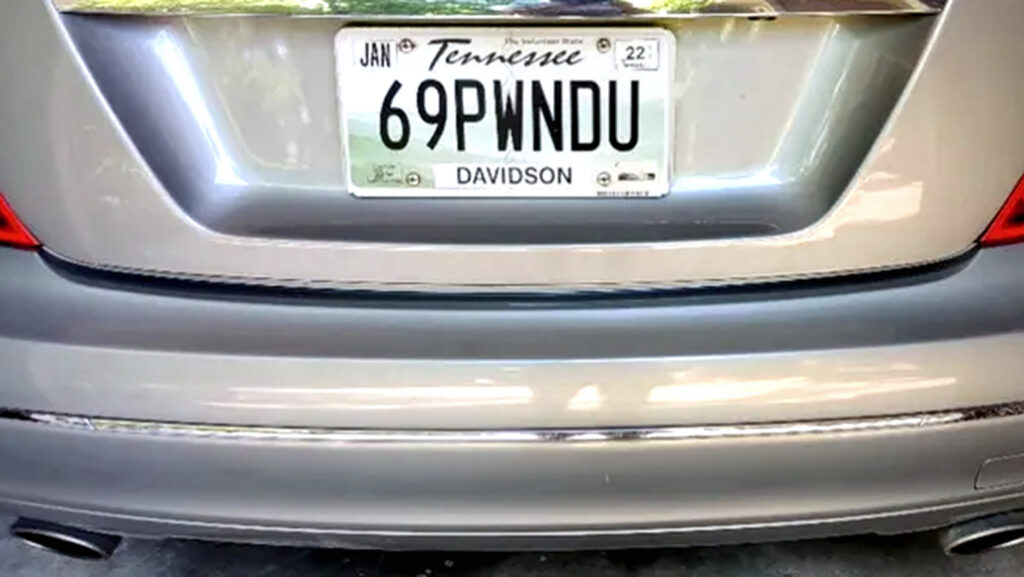
Munich Motor Show 2025 Ignites Europe’s Fierce Battle Against China’s Automotive Surge
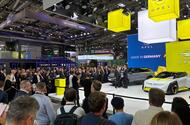
Opel-Vauxhall was one of a wave of European 'legacy' brands with a point to proveAt Europe's biggest motor show in years, locals defend against China's surge of bold designs and even bolder strategies
To a person, the early arrivals look busy and happy to arrive at an event billed all year as the greatest European motor exhibition for a decade, maybe longer.
In the massive Munich motor show entrance hall, veteran attendees talk about enjoying again the very smell of a genuine motor show.
Not that this Munich event is like static shows of old. Sure, it’s based in a classically huge, six-hall exhibition centre, but in other locations across the city there have already been extravagant unveilings and displays, many involving dynamic demonstrations and lots of test driving, and there will be even more throughout the week.
Munich motor show 2025: all the best new cars
If you seek affirmation that car culture and a car industry still matters to at least one leading nation in Europe, here it is. However, you only need to take a few steps inside – and begin to eyeball the huge and fast-changing display screens that are everywhere – to realise that this show is far from being an old-time carefree chance to feast your eyes on the latest in mobility.
This is a car industry battleground. It's the place where a renewed European industry – mostly German, because of where we are – will show how it will use a slew of improved and rethought models to defend its stake in its home car market against a tidal wave of Chinese rivals, every one of them driven by a slowdown in their own home sales to seek customers across Europe.
Annual car making capacity in China today is 50 million, a helpful Chinese market expert tells me, but the home market can only accept 28 million. There are thus 22 million extremely well-priced Chinese cars per year seeking foreign homes, despite both the EU and US tariff uncertainties.
This fact has special implications for the UK car market, currently just about the easiest and most accepting of the lot for an importer to enter.

The seriousness of the challenge to Europe is laid bare by the extreme changes, particularly in tone of voice, of major players.
Audi has already revealed its superb 'TT' coupé concept – reminiscent in my eye of the Jaguar Type 00, in which its design chief Massimo Frascella was also heavily involved. Audi, says Frascella, aims to begin a new design era. He has already candidly told assembled hacks that the four-rings marque “lost its way” for a while and needs a bold, simple, new design direction. This is it.
BMW uses Munich to reveal its own hottest harbinger of change, the new iX3 EV, first production model from the much-discussed Neue Klasse family that will eventually to amount to 40 different cars. The aim is to greatly improve both the customer appeal and the economics of the Munich company’s whole car-making business.
The iX3 looks good – a little more like the outgoing model than some might have wished (one of the penalties of designing SUVs) and somewhat bigger than expected. Perhaps the first Neue Klasse saloon – previewed at the show and confirmed to take the i3 name – will be even better, we all agree.
Mercedes-Benz has plenty to offer too. Its big 'WELCOME HOME' slogan is on screens and hoardings everywhere and is doubtless meant to sound comforting - and to encourage those who know the brand values to embrace them again. To my ear, there’s a strikingly un-Mercedes lack of confidence about it. 'Please come back', they’re saying; 'you left us and now we really need you.' I'm not sure desperation sells. It's a million miles from 'Engineered Like No Other Car' back in the day.

Volkswagen is also in full change mode, but part of that change is backward. There’s lots of talk about the new, enticing range of small EV models building a 'true Volkswagen' line-up. All the talk is about realigning the range with Volkswagen's core values. There’s a bit of desperation there too – 'remember the good old days?' – but it works because it’s understandable. Small EVs have an appeal and a logic to the many of us numbed in recent years by successions of big saloons and endless identical SUVs with 500bhp-plus, as if such outputs were important to most car buyers.
But again, this isn’t a simple celebration of Volkswagen's capabilities and a chance to appreciate its view of the future. It’s a grim-faced circling of the wagons to meet a looming threat – from China. Many other displaying brands show the same mindset.
There are actually more Chinese manufacturers displaying at this Munich show than European ones, although you wouldn’t know it. Even well-known Oriental marques, established in Europe, are scattered to remote locations across the six-hall array, smothered by dozens of stands occupied by decent-enough component suppliers likely to be of little interest to the thousands of punters due here later in the week. Finding the likes of Changan, Xiaomi and Aito – all of which have new cars to show – is like being at an airport and being forced to walk through endless duty-free shops on your way to the departure gate.

Along the way, I learn that the initials of Aito – one of at least five car marques backed by the gigantic, controversial Huawei technology conglomerate – stand for 'Adding Intelligence To Auto'. This information comes one of many nice, open-faced, young Chinese brand ambassadors who intercept me as I wander past. They all seem keen to talk and happy to be at Europe’s greatest motor show. Not one, as far as I can judge, is interested in the overthrow of Western civilisation…
The Europe-versus-China thing is on everyone’s mind in Munich, yet it can’t be pitched as a battle. As all parties admit, the new Chinese arrivals employ copious numbers of Europeans to import, register, sell and service their products - surely a positive. And from the product appeal point of view, you can hardly expect a financially pressed European car consumer to feel guilty about buying the best-value car they can find, whatever its origin.
The focus of many discussions therefore was on what the European authorities, muleishly intent on implementing climate neutrality standards that pose an existential threat to the whole European car industry, can do to improve the situation.
The words 'sense of urgency' come up every time legislators were mentioned – not least by new Renault Group boss François Provost, who makes clear his belief that the European strategy on climate neutrality is wrong and that “technology neutrality with a push toward electric” is the way that will work.

One Munich feature, different from motor shows past, is its overall quietness. No loud displays; no bands or dance acts; even the ceiling-high video presentations are muted. “This place is a bit like electric cars themselves,” says one cynic. “No noise, no vibe.”
Yet such a dismissal of Munich’s mighty event – with its many associated city mobility festivals – would be a gross misinterpretation of what really happened.
Wonderful designs with new eye-appeal are everywhere. Huge improvements in the practical appeal of European cars have been prepared for whizzbang unveilings in these epoch-making days of early September 2025, likely to be remembered for many years. The excellence – and in many cases the anonymity – of the latest Chinese offerings is also laid bare.
Now the battle for the soul of the European car industry will begin in earnest.
Luxury Car Interiors Face Off as Mercedes Critiques Audi and BMW’s Bold New Designs

Volvo CEO Foresees Challenges and a Future Shaped by Chinese Automotive Innovation










